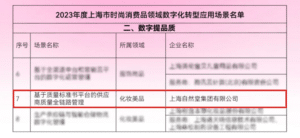The yuan has become Putin’s new weapon: Russia has significantly increased its use of the yuan to evade international sanctions
[ad_1]
The latest research report released by the European Bank for Reconstruction and Development shows that 20% of Russia’s imported goods are traded in RMB, up from 3% a year ago. The proportion of imports from third countries settled in RMB has risen to 5% from only 1% before the war broke out in February 2022.
Russia has become the third largest offshore RMB clearing center
The European Bank for Reconstruction and Development report believes that the renminbi is used as an instrument currency, and Russia is now the third largest clearing center for offshore renminbi transactions, after Hong Kong and Singapore.
The report also revealed that Russia is evading sanctions by requiring trading partners to use yuan for transactions. Importing products through intermediary countries or exporting oil via tankers without Western insurance is another way for Russia to evade sanctions. The report also revealed that the use of the yuan has increased significantly when it comes to sanctioned goods and dual-use equipment. The report also pointed out that in the second half of 2022, the settlement of Russian goods imported from China in RMB exceeded the US dollar.
The report believes that sanctions against Russia will lead to a significant increase in the proportion of RMB in international trade settlements, which may lead to a more fragmented global payment system.
How to effectively sanction Russia? The RMB poses a new challenge to the West.
Russian Ministry of Economy: Russia-China Trade75% of transactions are in RMB
The Russian independent media RBC disclosed the situation in more detail. According to the Russian Ministry of Economy, a quarter of Russia’s trade volume with countries other than China is settled in RMB. The Russian Ministry of Economy stated that the most important friendly currency is the renminbi. According to statistics from the ministry, in the first half of 2023, 75% of Russia-China trade volume was settled in RMB. 25% of Russia’s trade with countries other than China is settled in RMB.
Russia calls the U.S. dollar and euro “toxic currencies.” The Russian Central Bank stated that less than 28% of Russia’s export revenue in July was in toxic currencies (87% in January 2022), while less than 31% of import revenue was in “toxic currencies” (67% in January 2022) ).
Dr. Hundal: Russia has no choice
Shab Hundal, a lecturer at Jyväskylä University of Applied Sciences in Finland and a Ph.D. in Economics and Business Administration, told a VOA reporter that Russia has significantly increased its use of RMB to evade international sanctions. This is not only an economic issue, but also a geopolitical issue. political issues. “Every country must survive, and China is adjacent to it. Before the Russia-Ukraine war, the two were strategic partners. Now, among the foreign currencies it can use, the renminbi is the most stable and powerful international currency. Russia Decision makers have no choice but to use the RMB in large quantities.” Dr. Hundal believes that due to the high volatility of the ruble, Asian countries that trade with Russia want to trade with Russia but do not want to use the ruble, so the RMB It becomes a choice that both parties are willing to make.
De-dollarization of Russia and weaponization of the renminbi
Dr. Maria Shagina, an expert on economic sanctions and a senior fellow at the British Institute for International Strategic Studies, wrote in her book “Western Financial War and Russia’s De-Dollarization Strategy-How Sanctions on Russia Will Reshape the International Financial Landscape” According to the report, Russia began its de-dollarization in 2014. By selling dollars from its foreign exchange reserves, Russia changed its traditional approach to currency selection.
The Russian government has accumulated large foreign exchange and gold reserves – nearly $640 billion, ranking fifth in the world. Dr. Shagina believes that after 2014, the currency composition of Russia’s international reserves has undergone tremendous changes, and the Russian Central Bank has significantly reduced its U.S. dollar reserves. In 2021, the proportion of U.S. dollar foreign exchange reserves will drop from 43% in 2014 to 16.4%. The share of gold in Russia’s monetary reserves has more than tripled, reaching more than 20% of value, surpassing the U.S. dollar. The share of the yuan jumped from zero in 2014 to 13% in 2021, making Russia the world’s largest holder of the yuan.
Russia’s “Kommersant” quoted Anna Volkova, director of retail business development of Russia’s “Sinara Bank”, as saying that by the end of 2025, the RMB’s share of Russians’ foreign currency savings will be nearly 65%. Volkova said: “It is expected that by the end of 2024, nearly 40% of Russians’ foreign currency savings will be in yuan. By the end of 2025, it will be about 65%.”
VTB believes that the Chinese currency will account for a quarter of its clients’ foreign currency savings, with this share exceeding 45% by the end of 2024.
Observers pointed out that Western sanctions use the U.S. dollar as a weapon, while Russia uses the RMB as a weapon. While Russia is de-dollarizing, it is also weaponizing the RMB.
Juha-Matti Tauriainen holds a PhD in economics from Jyväskylä University in Finland, focusing on Russian market research. He told VOA: “Current Russian Central Bank Governor Nabiullina said that the availability of RMB reserves is crucial to maintaining financial stability, that is, in the event that currency intervention is required. Yes, due to sanctions, Russia’s foreign trade has shifted to the yuan. Russia also tried the Indian rupee but quickly suspended that effort.”
Putin boosts RMB internationalization
In March 2023, Russian President Vladimir Putin informed Chinese President Xi Jinping that he favored the use of the renminbi in Russia’s settlements with Asian, African and Latin American countries. This summer, foreign media reported that some Indian and Pakistani importers were buying Russian oil in yuan.
According to statistics from the Moscow Exchange in February this year, the renminbi surpassed the U.S. dollar for the first time in history and became the currency with the largest monthly trading volume on the exchange. Yuan trading volume on the Moscow Exchange exceeded $19.6 billion in February, one-third higher than in January, while dollar-settled trading volume was $18.8 billion. Among the trading volumes of various currencies on the Moscow Exchange in February, the RMB accounted for approximately 40% of the total major currency transactions, and the US dollar accounted for approximately 38%. A year ago, the US dollar accounted for 87.6% and the RMB only 0.32%.
The Financial Times calculated based on data from the SWIFT system that when Russia’s war of aggression against Ukraine broke out, the RMB’s share in global trade settlements was 2%. In February 2023, it rose to 4.5%. At the same time, the U.S. dollar’s share of world trade fell by 2.5%, from 86.8% to 84.3%.
According to data from the Ministry of Commerce of China, China’s foreign trade RMB transaction volume increased by 37% in 2022, reaching 7.92 trillion yuan (1.17 trillion U.S. dollars), accounting for 1/6 of total foreign trade.
Chinese official data shows that in March 2023, the RMB became the most widely used currency in China’s cross-border transactions, surpassing the U.S. dollar for the first time. The RMB accounted for 48.4% of China’s foreign trade settlements, while the US dollar dropped to 46.7%. For the first time, RMB became China’s first currency for foreign trade settlement.
The internationalization of the RMB has always been China’s goal. Now, with the help of Russia’s “de-dollarization”, progress is being made again. Russia and China have both established their own cross-border payment systems, and the two countries are also promoting the internal payment system of the BRICS countries, the so-called “BRICS payment.” After the Russo-Ukrainian War, Russia became more urgently in need of the BRICS payment system, and even presented a model of the “BRICS dollar” at the BRICS summit in Johannesburg in August this year.
If the BRICS payment system is established, it will be more conducive to China’s RMB internationalization and Russia’s de-dollarization, and it will also be more helpful for Russia to evade international sanctions.
Julie Yu-wen Chen, a professor at the University of Helsinki and an expert on China studies, told VOA that her Russian students told her that there are now many Chinese products and Chinese people in Russia, and relations between the two countries are at an all-time high.
Professor Chen said: “My understanding is that the dominance of the U.S. dollar makes international sanctions more effective, but in the long run, economic sanctions may reduce the attractiveness of the U.S. dollar as an instrument currency, thereby reducing its dominance. This is because now the RMB It has become increasingly important in Sino-Russian trade. For third countries that are not subject to economic sanctions but hold currency swap lines with the People’s Bank of China, such as Tajikistan, the use of RMB to trade with Russia has also increased.”
China may be the only beneficiary of Russia’s war of aggression
According to Chinese customs data, China-Russia trade volume increased by 29.3% year-on-year in 2022, reaching a record high of 190.27 billion US dollars. China’s exports to Russia increased by 12.8% in the past year, reaching US$76.12 billion, while Russia’s exports to China increased by 43.4%, reaching US$114.15 billion.
The trend of surge in Sino-Russian trade will become even more significant in 2023. According to data from China Customs in July, from January to June this year, the trade volume between China and Russia was US$114.547 billion, a year-on-year increase of 40.6%. Among them, China’s exports to Russia were US$52.284 billion, an increase of 78.1%; China’s imports from Russia were US$62.263 billion, an increase of 19.4%.
It is expected that the annual trade volume between China and Russia will reach 240 billion US dollars, more than a quarter of Russia’s foreign trade volume. During the Western war blockade, China became Russia’s largest material supplier. The abnormal acceleration of Sino-Russian trade has greatly reduced Western sanctions against Russia. Dual-use materials that Russia urgently needs, such as cars, accessories, electronic products and components, can be obtained from China. Analysts believe that the only beneficiary of Russia’s war of aggression against Ukraine may not be Russia, but China.
So how can the international community prevent Russia from using yuan to evade sanctions?
Dr. Shabu Hundal believes that it is impossible for the West to kick China out of SWIFT, as that would be tantamount to self-inflicted harm. “It depends on the political equations, and there are many political equations, one is between Russia and China, another is between China and the United States, China and the European Union, and then the European Union and the United States,” he said.
[ad_2]
Source link







